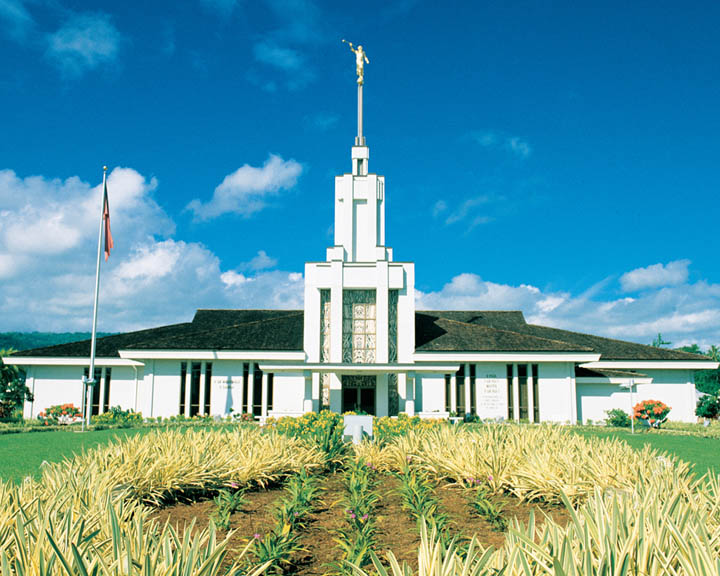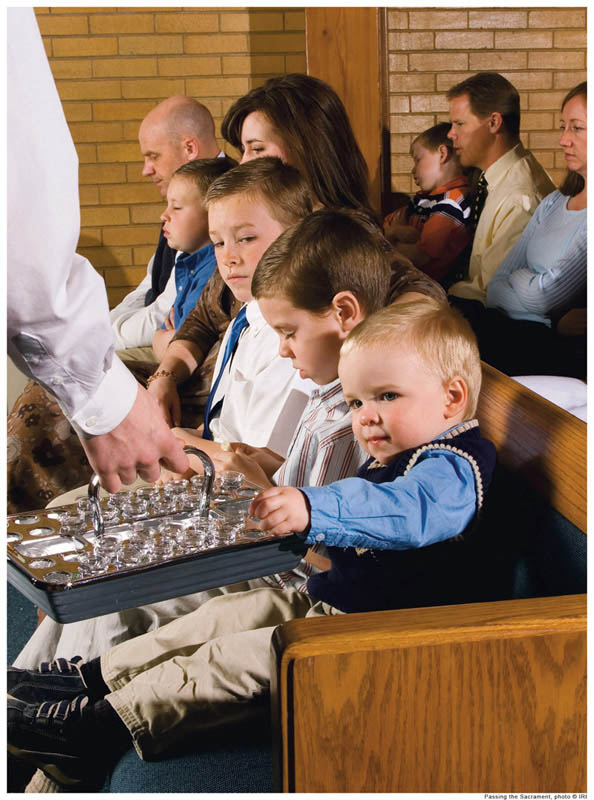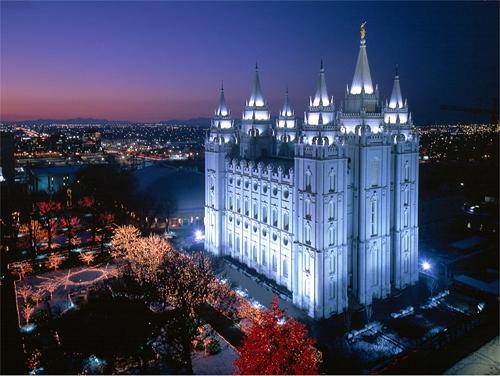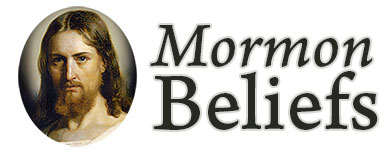 There are many rumors flying about Mormon ritual, most of them outlandish and insulting to the The Church of Jesus Christ of Latter-day Saints and its members. Many rumors center on the temple ritual. The temple is the House of God, and just as its always been, one has to qualify to enter the temple. Standards of purity must be met. Thus, not even all Latter-day Saints qualify to enter the temple. Mormons would love every single person on earth to come inside the temple. All they have to do is qualify, and the temple is open to them. The temple ritual and the covenants made there are held in high esteem, and therefore are only to be discussed within the temple walls. Therefore, two people who are temple-worthy and who have made temple covenants, will not discuss the details outside of the temple, not even with each other. Because of this, the covenants and ritual are obviously not secret, because both people know them completely. They are, however, sacred, and need to be confined to the temple. Mormon Meetings Mormon meetings are well-organized, so that any Mormon meeting, anywhere in the world, will have the same basic organization. However, they are not ritualistic. The only recited prayers are the blessings upon the sacrament, consisting of bread and water, blessed and passed by men who hold the priesthood of God. The sacrament prayers must be recited exactly and were received by revelation (Doctrine and Covenants 20:77, 79). The blessing on the bread is as follows:
There are many rumors flying about Mormon ritual, most of them outlandish and insulting to the The Church of Jesus Christ of Latter-day Saints and its members. Many rumors center on the temple ritual. The temple is the House of God, and just as its always been, one has to qualify to enter the temple. Standards of purity must be met. Thus, not even all Latter-day Saints qualify to enter the temple. Mormons would love every single person on earth to come inside the temple. All they have to do is qualify, and the temple is open to them. The temple ritual and the covenants made there are held in high esteem, and therefore are only to be discussed within the temple walls. Therefore, two people who are temple-worthy and who have made temple covenants, will not discuss the details outside of the temple, not even with each other. Because of this, the covenants and ritual are obviously not secret, because both people know them completely. They are, however, sacred, and need to be confined to the temple. Mormon Meetings Mormon meetings are well-organized, so that any Mormon meeting, anywhere in the world, will have the same basic organization. However, they are not ritualistic. The only recited prayers are the blessings upon the sacrament, consisting of bread and water, blessed and passed by men who hold the priesthood of God. The sacrament prayers must be recited exactly and were received by revelation (Doctrine and Covenants 20:77, 79). The blessing on the bread is as follows:

“O God, the Eternal Father, we ask thee in the name of thy Son, Jesus Christ, to bless and sanctify this bread to the souls of all those who partake of it, that they may eat in remembrance of the body of thy Son, and witness unto thee, O God, the Eternal Father, that they are willing to take upon them the name of thy Son, and always remember him and keep his commandments which he has given them; that they may always have his Spirit to be with them. Amen.”
The blessing on the water is as follows: “O God, the Eternal Father, we ask thee in the name of thy Son, Jesus Christ, to bless and sanctify this water (wine) to the souls of all those who drink of it, that they may do it in remembrance of the blood of thy Son, which was shed for them; that they may witness unto thee, O God, the Eternal Father, that they do always remember him, that they may have his Spirit to be with them. Amen.” Milestone Rituals Like other religions, the Mormon Church has rituals that mark special events in life and the chronological and spiritual progress of its members. The first is the “baby blessing,” which is very similar to the Jewish brit mila. There is no specific age at which the event needs to take place. Most Mormon parents have their babies blessed when they are a few weeks old and healthy enough to go out. The event can be held in church at the beginning of a sacrament meeting, or in a home (as long as the bishop is present). A Melchizedek Priesthood holder (often the child’s father — remember that the Church has a lay clergy) takes the baby in his arms in the center of a circle comprised of other invited priesthood-holders (family members or good friends). He invokes the name of Christ and the power of the priesthood which he holds to give the baby the name by which he/she will be known on the earth and on the records of the Church. He then pronounces a prophetic blessing upon the infant.  The second milestone event is baptism. Baptism is done by immersion when children reach the age of 8. Mormons call this “the age of accountability,” when a child is old enough to discern right from wrong and to understand the process of repentance. Of course, many converts are older than eight. People who are mentally handicapped and never reach the mental capacity of an eight year old, are saved in innocence through the atonement of Christ and have no need of baptism. After baptism, the person is qualified to receive the gift of the Holy Ghost by the laying on of hands. As long as he or she remains worthy, the Holy Ghost will be the person’s constant companion. The Holy Ghost is the conveyor of revelation. He testifies of truth, aids discernment, comforts and warns. This gift is visible in the countenances of the Saints. Their personal light is discernible. The Holy Ghost cannot dwell in an unclean tabernacle, and He will depart if a person defiles his body through sin or substance abuse. Priesthood ordinations are also milestone rituals. There several offices in the Aaronic Priesthood — deacon, teacher, priest, and bishop. A worthy boy can become a deacon at age 12, a teacher at age 14, and a priest at age 16. A priest in the Aaronic Priesthood can bless the sacrament and baptize. The higher priesthood is the Melchizedek, and a worthy young man can receive it after age 18. All male Mormon Missionaries hold the Melchizedek Priesthood. Through this priesthood, all the charismatic gifts are manifest, including the healing of the sick. All other formal church rituals occur in the temple. Temple Rites
The second milestone event is baptism. Baptism is done by immersion when children reach the age of 8. Mormons call this “the age of accountability,” when a child is old enough to discern right from wrong and to understand the process of repentance. Of course, many converts are older than eight. People who are mentally handicapped and never reach the mental capacity of an eight year old, are saved in innocence through the atonement of Christ and have no need of baptism. After baptism, the person is qualified to receive the gift of the Holy Ghost by the laying on of hands. As long as he or she remains worthy, the Holy Ghost will be the person’s constant companion. The Holy Ghost is the conveyor of revelation. He testifies of truth, aids discernment, comforts and warns. This gift is visible in the countenances of the Saints. Their personal light is discernible. The Holy Ghost cannot dwell in an unclean tabernacle, and He will depart if a person defiles his body through sin or substance abuse. Priesthood ordinations are also milestone rituals. There several offices in the Aaronic Priesthood — deacon, teacher, priest, and bishop. A worthy boy can become a deacon at age 12, a teacher at age 14, and a priest at age 16. A priest in the Aaronic Priesthood can bless the sacrament and baptize. The higher priesthood is the Melchizedek, and a worthy young man can receive it after age 18. All male Mormon Missionaries hold the Melchizedek Priesthood. Through this priesthood, all the charismatic gifts are manifest, including the healing of the sick. All other formal church rituals occur in the temple. Temple Rites  The first temple rite is baptism for the dead. These can be performed by youth as young as 12, who have been interviewed by their bishop and found worthy to enter the temple. The Apostle Paul talked about baptism for the dead, but the Latter-day Saints are the only Christians who understand the doctrine. It is that those who have lived and died on the earth without having the opportunity to hear the gospel of Jesus Christ have died without knowledge of the law and can’t be judged by the law. They will have the opportunity to hear the gospel of Christ in the afterlife, while they are spirits awaiting resurrection and judgment. But they cannot perform ordinances without bodies. We do it by proxy for them, and they are free to accept or reject those ordinances. After baptism, the proxy receives the ordinance of the receipt of the Holy Ghost for the deceased. The next temple ordinance is washing and anointing, a purifying ritual. This is symbolic of the washing and anointing of Aaron before he officiated in the tabernacle in the wilderness. It is symbolic, so a single drop of water or oil is representative of washing and anointing. Blessings are recited by temple workers, and they must be exact, so they are memorized. The next ritual is the endowment. An endowment is a gift, in this case a gift of knowledge, power, and protection from the Lord. The Plan of Salvation is reviewed. The creation, the atonement, and the attaining of eternal life are taught. Succeeding covenants go from the basic to the most exalted. Since everything belongs to the Lord, all we really have to give Him is our will. A person prepared to enter the highest kingdom of heaven, called the celestial kingdom, where God Himself dwells, is wholly willing to do God’s will in all things. At the end of the endowment session, patrons move to the Celestial room, representative of exaltation, to meditate and pray. Patrons of the temple all dress in white, so it is impossible to tell what earthly attainment people have reached. All are equal in the sight of the Lord.
The first temple rite is baptism for the dead. These can be performed by youth as young as 12, who have been interviewed by their bishop and found worthy to enter the temple. The Apostle Paul talked about baptism for the dead, but the Latter-day Saints are the only Christians who understand the doctrine. It is that those who have lived and died on the earth without having the opportunity to hear the gospel of Jesus Christ have died without knowledge of the law and can’t be judged by the law. They will have the opportunity to hear the gospel of Christ in the afterlife, while they are spirits awaiting resurrection and judgment. But they cannot perform ordinances without bodies. We do it by proxy for them, and they are free to accept or reject those ordinances. After baptism, the proxy receives the ordinance of the receipt of the Holy Ghost for the deceased. The next temple ordinance is washing and anointing, a purifying ritual. This is symbolic of the washing and anointing of Aaron before he officiated in the tabernacle in the wilderness. It is symbolic, so a single drop of water or oil is representative of washing and anointing. Blessings are recited by temple workers, and they must be exact, so they are memorized. The next ritual is the endowment. An endowment is a gift, in this case a gift of knowledge, power, and protection from the Lord. The Plan of Salvation is reviewed. The creation, the atonement, and the attaining of eternal life are taught. Succeeding covenants go from the basic to the most exalted. Since everything belongs to the Lord, all we really have to give Him is our will. A person prepared to enter the highest kingdom of heaven, called the celestial kingdom, where God Himself dwells, is wholly willing to do God’s will in all things. At the end of the endowment session, patrons move to the Celestial room, representative of exaltation, to meditate and pray. Patrons of the temple all dress in white, so it is impossible to tell what earthly attainment people have reached. All are equal in the sight of the Lord.  The final ordinance is the temple sealing, wherein a bride and groom are sealed in an eternal marriage vow, or an entire family is sealed together for an eternity. This happens when parents have married outside the temple and then wish to be sealed to each other and their children, or when a previously temple-married couple adopts a child. (Their own children are considered “born in the covenant,” so they are born sealed to their parents.) The sealing room is beautiful. It has an altar in the center, and bride and groom kneel on opposite sides. Chairs surround the periphery, where guests can sit to watch the sealing. Guests are dressed in Sunday best, while the bride and groom wear white. Guests must all be temple-worthy to attend. That means everyone in the room will be living a life of purity before the Lord. (Guests who do not qualify to enter the temple usually wait outside and gather for photographs when the bride and groom emerge from the temple. See LDS Weddings.) Any rumor that accuses Latter-day Saints of engaging in devilish, sordid, or sexual acts in their ritual is patently false. Please correct those you overhear passing on such rumors.
The final ordinance is the temple sealing, wherein a bride and groom are sealed in an eternal marriage vow, or an entire family is sealed together for an eternity. This happens when parents have married outside the temple and then wish to be sealed to each other and their children, or when a previously temple-married couple adopts a child. (Their own children are considered “born in the covenant,” so they are born sealed to their parents.) The sealing room is beautiful. It has an altar in the center, and bride and groom kneel on opposite sides. Chairs surround the periphery, where guests can sit to watch the sealing. Guests are dressed in Sunday best, while the bride and groom wear white. Guests must all be temple-worthy to attend. That means everyone in the room will be living a life of purity before the Lord. (Guests who do not qualify to enter the temple usually wait outside and gather for photographs when the bride and groom emerge from the temple. See LDS Weddings.) Any rumor that accuses Latter-day Saints of engaging in devilish, sordid, or sexual acts in their ritual is patently false. Please correct those you overhear passing on such rumors.
